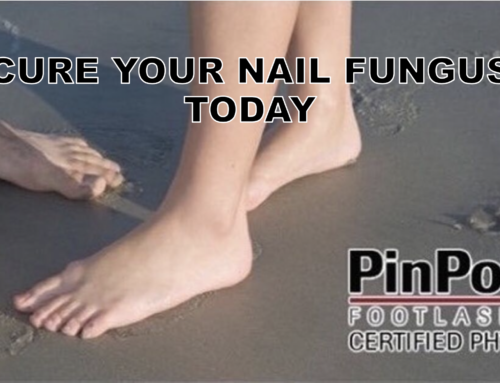How to soften and trim hard nails. To soften and trim hard fungal nails is often a difficult task. The toenail fungus can cause changes to the texture of the nails. While toenail fungus is normally an aesthetic issue that causes a change in how the toenail looks, there are functional issues that can arise from this type of infection as well.
Particularly, many patients struggling with toenail fungus feel like their nails are too hard or thick to cut. When this happens, regular grooming of the nail can become difficult. This can make the aesthetic appearance of the nail deteriorate even faster as the nail grows excessively long.
Healthy Nails
Trimming healthy nails should be effortless. There is a certain look that is associated with healthy nails. These nails will appear clear and expose the pink or brown skin underneath them. A healthy nail will be thin, consistent texturally, and not detached from the nail bed at all. A healthy nail won’t have any debris buildup under the nail. They won’t have cracks on the surface of the nail. The nail should grow at a reasonable rate and have enough structure to, but still, be soft enough to trim without a problem.
Signs of Nail fungus infection
Damage to the nail from fungus is typically only cosmetic. The nails will usually discolor in some way. Usually starting as a spot or stripe of discoloration that will then grow and cover more of the nail. As the infection continues, it can also change the texture and structure of the nail. Toenail fungus can directly cause debris buildup under the nail. It may also cause other changes, which frequently include cracking, brittleness, thickening, and hardening of the nails. These damages are usually only aesthetic and don’t affect the toe.
Occasionally, the changes in the texture and composition of the nail can have consequences. If the nail starts to become very brittle or hard, it can become very difficult to actually cut the nail with clippers. It can often be hard to leverage the clippers enough to actually slice through the surface of the nail because of the extreme hardness. If the nail has become very thick because of a fungal infection, this can have functional consequences for trimming the nails as well. When the nails become thick because of fungus, the opening of the blade on the clippers may not even be wide enough to get around the nail at all.
Why are my nails hard?
Hard fungal nails are an example of a symptom of toenail fungus; normal nails should not have this issue. Normal, healthy nails should look a certain way. Normally, the nail should be clear and expose the pink skin underneath it. The nail should be thin, even in texture, and completely connected to the nail bed.
Additionally, there shouldn’t be any debris buildup under the nail, cracking on the surface of the nail, or any other sort of damage that is visible. The nail should grow at a normal rate and be structurally sound, but still be soft enough to trim without a problem.

Symptoms of Hard Nails
Hard fungal nails are just one symptom of an otherwise long list of toenail fungus symptoms. For one, nail fungus causes changes in the coloration of the toenail. The changes in the color of the nail normally first appear as a white, yellow, brown, or black dot or stripe of color on the nail’s surface. When the toenail fungus infection is allowed to progress without effective treatment, the discoloration can spread to cover a larger portion of the nail. In cases where the fungus is left untreated for a long period of time, the entire nail can often become covered in the color.
Maintenance of Nails
Aside from changing the color of the nail, toenail fungus can cause other damage. For example, fungal nails often become brittle, cracked, and lifted from the nail bed. They can also become hard and thick, which poses a unique concern as it affects the ability to groom the nails effectively. When this happens, it is necessary to take other measures to trim the nails regularly.
Hard fungal nails still need to be trimmed frequently to keep up with good hygiene practices. When nails are left to grow very long, they can pose many issues for health. For one, extremely long toenails can harbor bacteria under them that are unhealthy. Additionally, extremely long toenails can increase the risk of an ingrown toenail formation.
Why should I try to cut my hard nails?
Long toenails can be prone to breakage as well, which can be both painful and can form jagged edges alongside the toenail. Long toenails can push up against your shoes, causing discomfort and lifting of the nail from the nail bed. In general, having excessively long toenails is a bad idea that can cause problems down the road.
However, for people with hard fungal nails, sometimes letting the nail grow out seems like their only option. Because the fungus can make the nails hard to cut through, sometimes getting nail clippers to trim the nail effectively can be impossible. Additionally, even if the fungus isn’t making the nail harder, the nail can become thickened because of toenail fungus.
This can make it difficult to cut through the nails as well, and can even prevent people from getting their nails to fit between the blades of their nail clippers.

Soften Nails
Because of these difficulties, softening hard fungal nails is essential to their regular maintenance. While getting the nail fungus infection itself cured is the only way to permanently return the nail to a trimmable condition, there are other ways to help in the meantime. For example, softening the nail using a foot soak is an effective way to groom hard or thickened fungal nails. This is an easy method that can be done at home with a few necessary tools.
How to soften and trim hard nails. Simply fill a basin with enough warm water to completely cover your feet, and soak your nails for 20-40 minutes. After soaking, try to trim them again. If not, you can try soaking your toes again daily until they’re soft enough to cut. With thicker nails, you can try buffing off some of the nail’s thickness with a nail file or nail buffing tool as well.
What to do After Soaking
After soaking for this length of time, remove your feet and dry off your nails. Immediately after soaking the nails, try cutting them again. If they are able to be cut, this is great! Soaking your toenails has had the desired effect, and grooming your toenails should be easier while you wait to get the treatment done for the fungus itself.
However, if soaking your toenails didn’t soften them enough the first time, there is still hope. First of all, you can try soaking fungal toenails for consecutive days to improve the results you see. By soaking the nails repeatedly, they can hydrate better and absorb more moisture.
Try soaking your nails every day and attempting to trim them after each attempt. If you still can’t trim your nails after consecutive attempts, you can also try applying a nail softening cream. Apply this cream each time you soak your toenails and allow it to soak into the nail.

What can be done if soaking doesn’t work after the 1st try?
Softening fungal nails can take more than just one attempt at soaking in warm water. For severe toenail fungus infection, you may need to do multiple sessions of soaking before the nail can be cut. You should repeat the soak daily until your nail can be cut. If this doesn’t improve the condition of your nail, try a nail softening cream after the water bath as well. Softening fungal toenails at home won’t always work. Sometimes the nail is too thick and won’t fit between the blades of the nail clippers. In this case, debridement can thin the nail down and is usually done in conjunction with treatment for the fungal causes of the thickening/hardening.
Permanently softening fungal toenails is accomplished by treating the fungus itself. After eliminating the fungus from the nail bed, a new healthy nail should start to grow behind the old damaged one. This nail should be clear, thin, and soft enough to cut.
Laser Treatment for Toenail Fungus
While soaking the feet helps trim hard fungal nails, the best thing to do in this situation is to be seen by a licensed podiatrist. They will be able to provide effective care for the fungus, and hopefully treat the fungal infection itself once and for all. To learn more about this treatment or schedule a free consultation with a licensed podiatrist, give us a call at 1-(800) 672-0625 or visit our website for more information.




